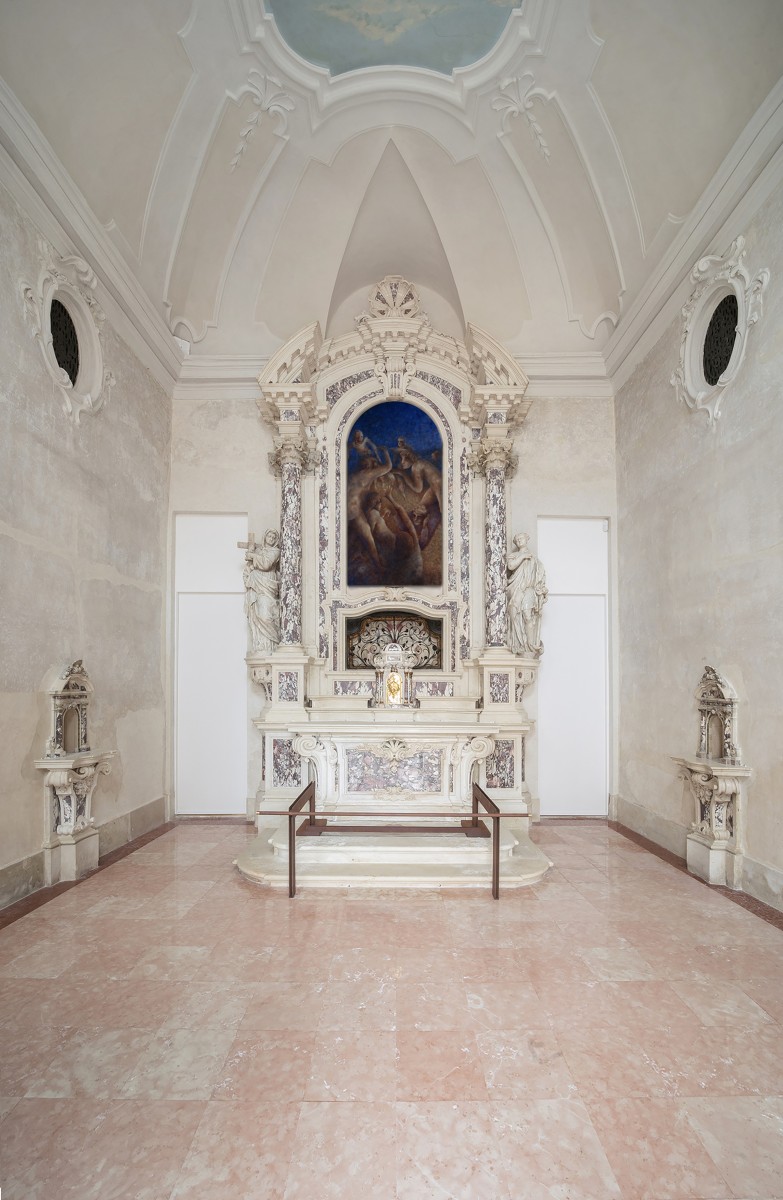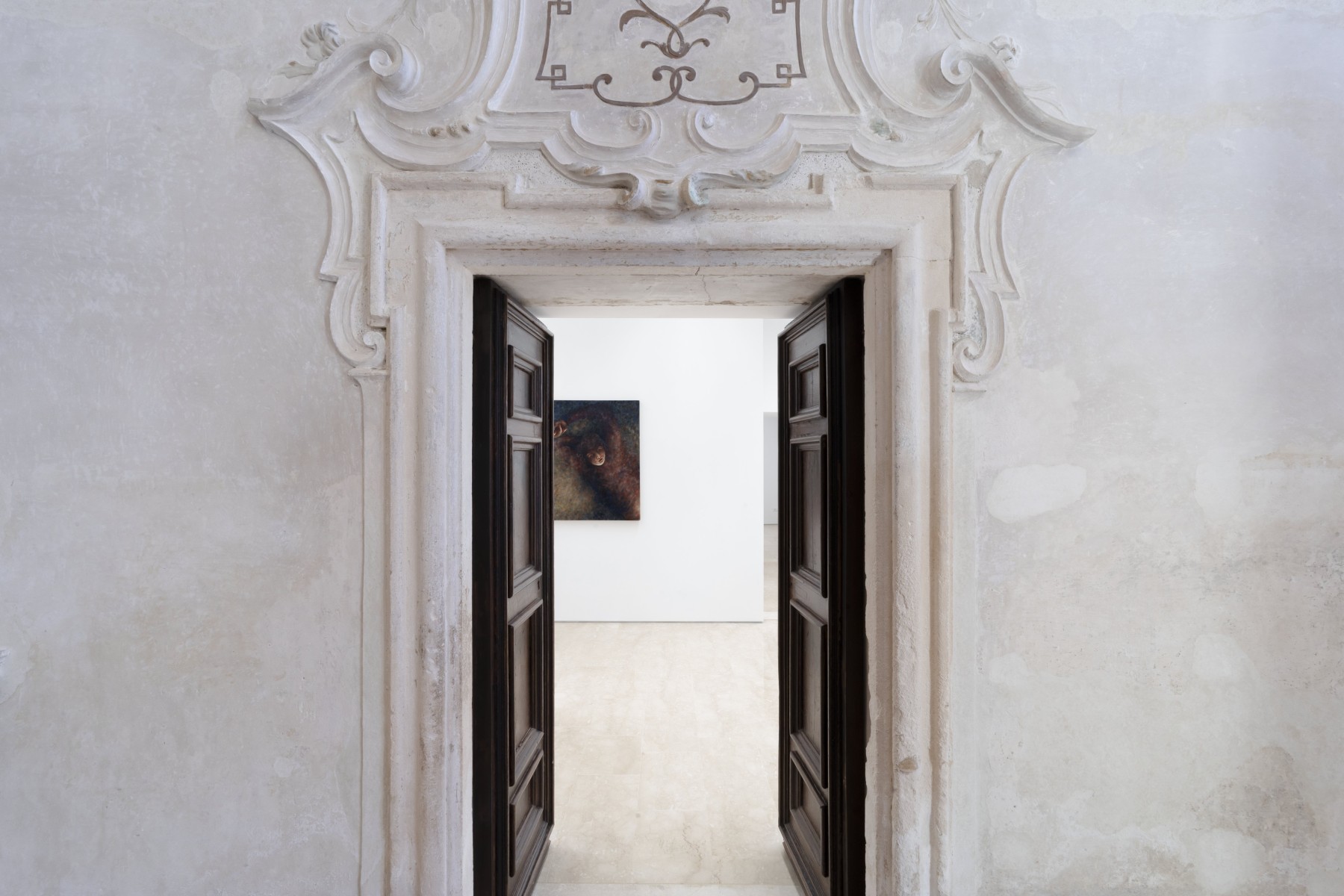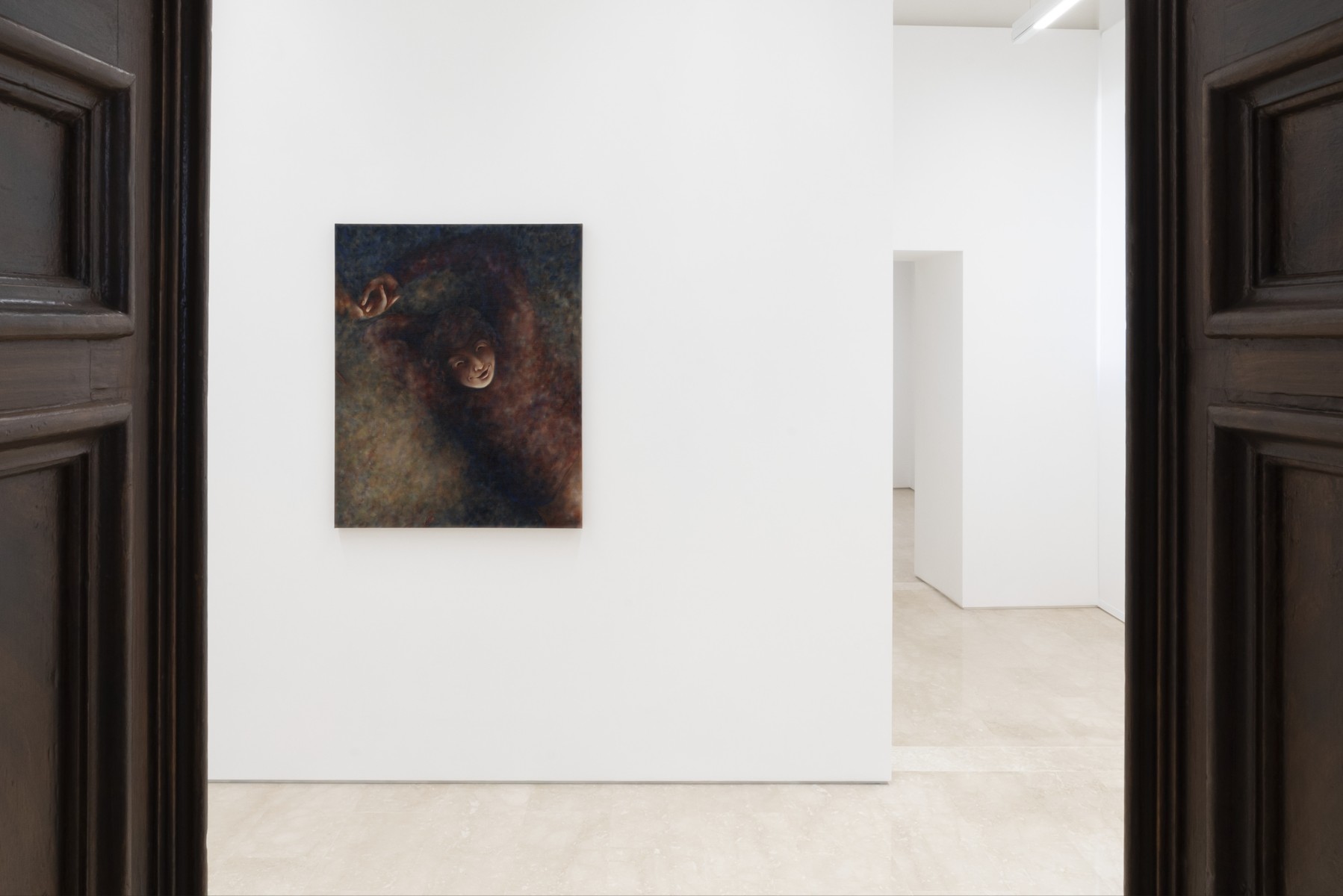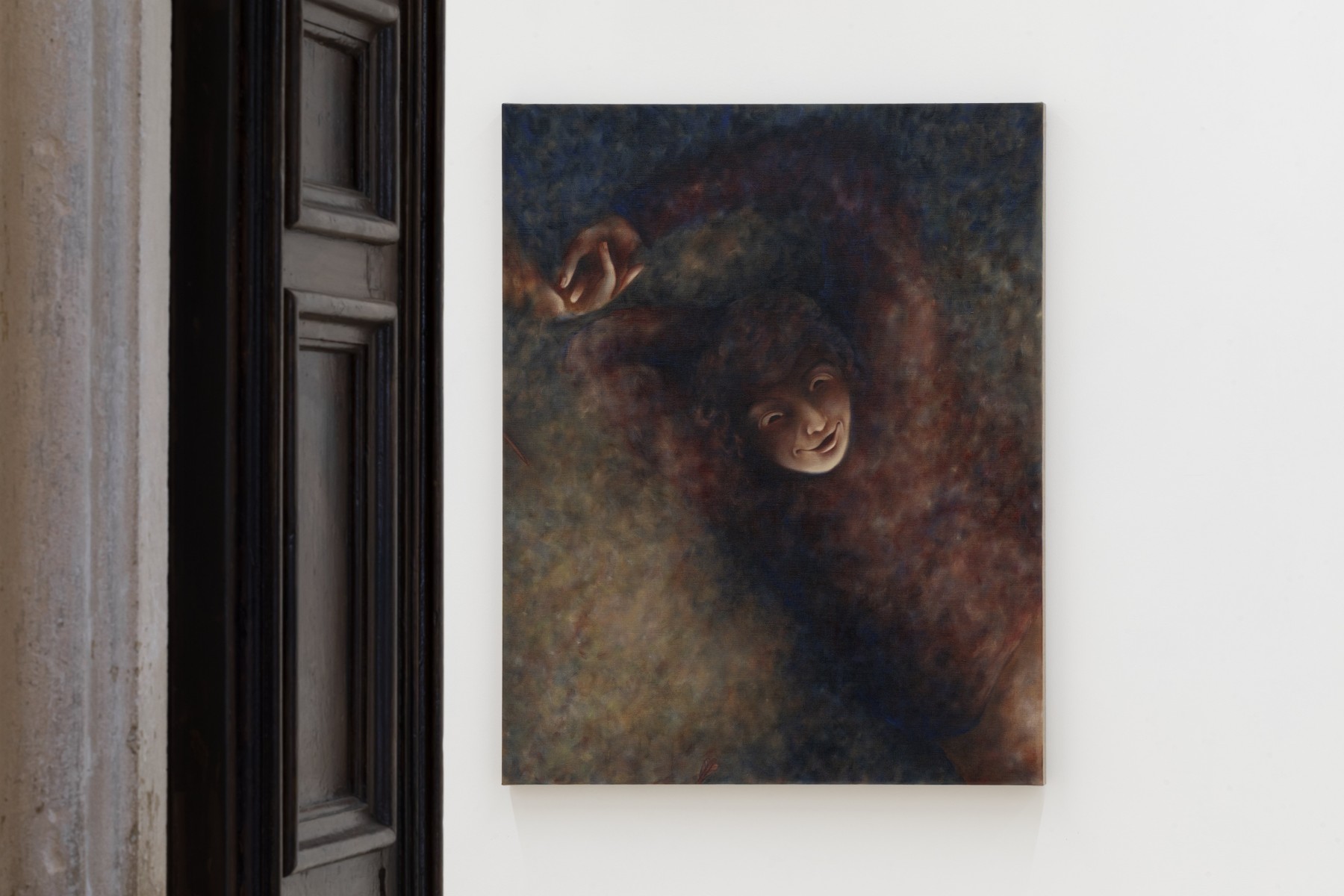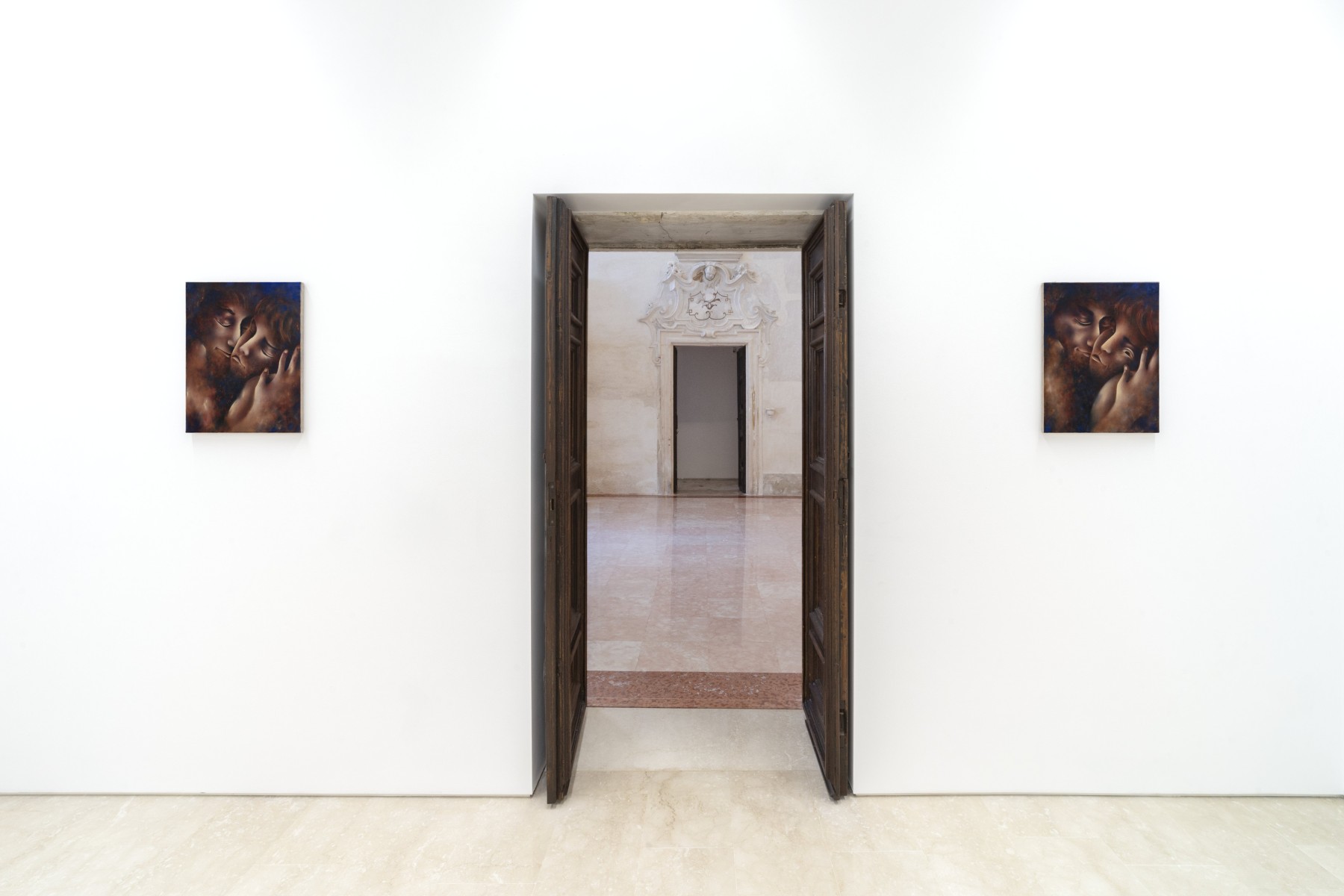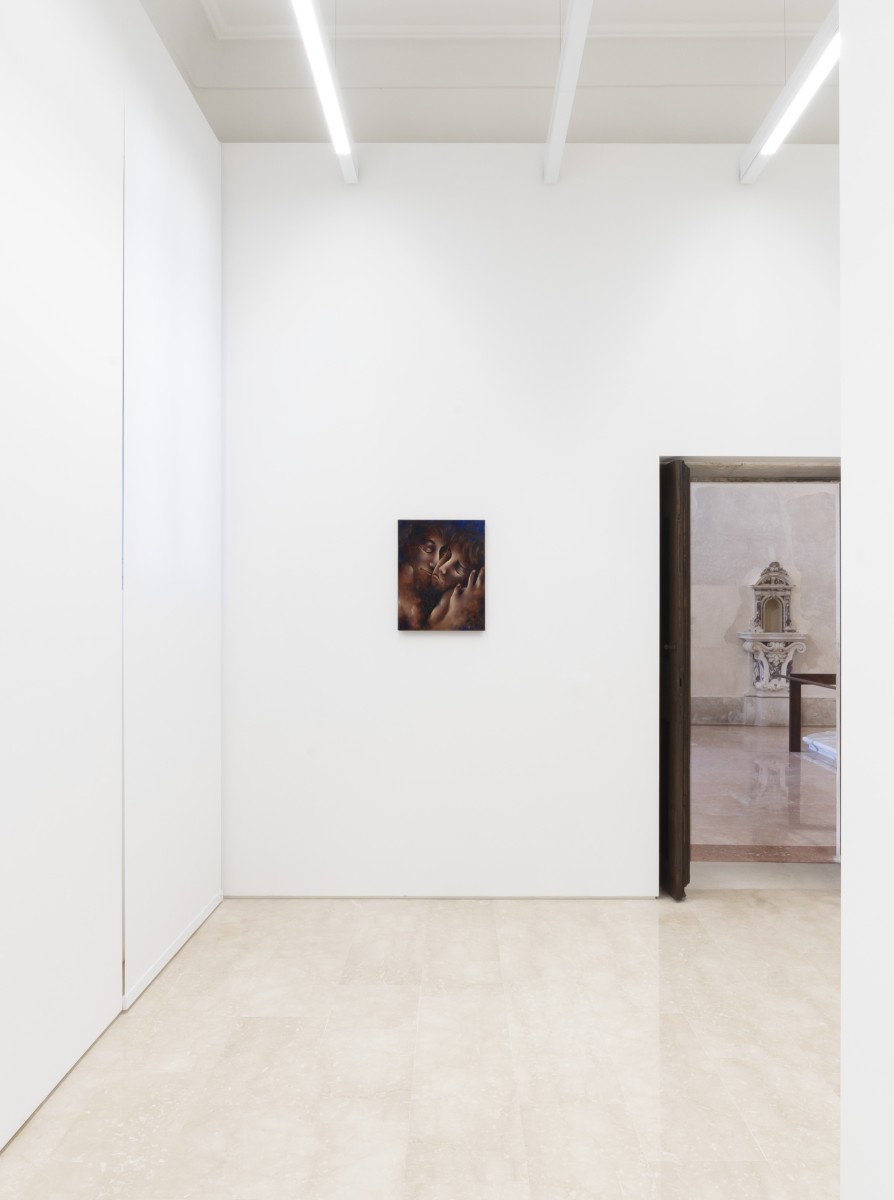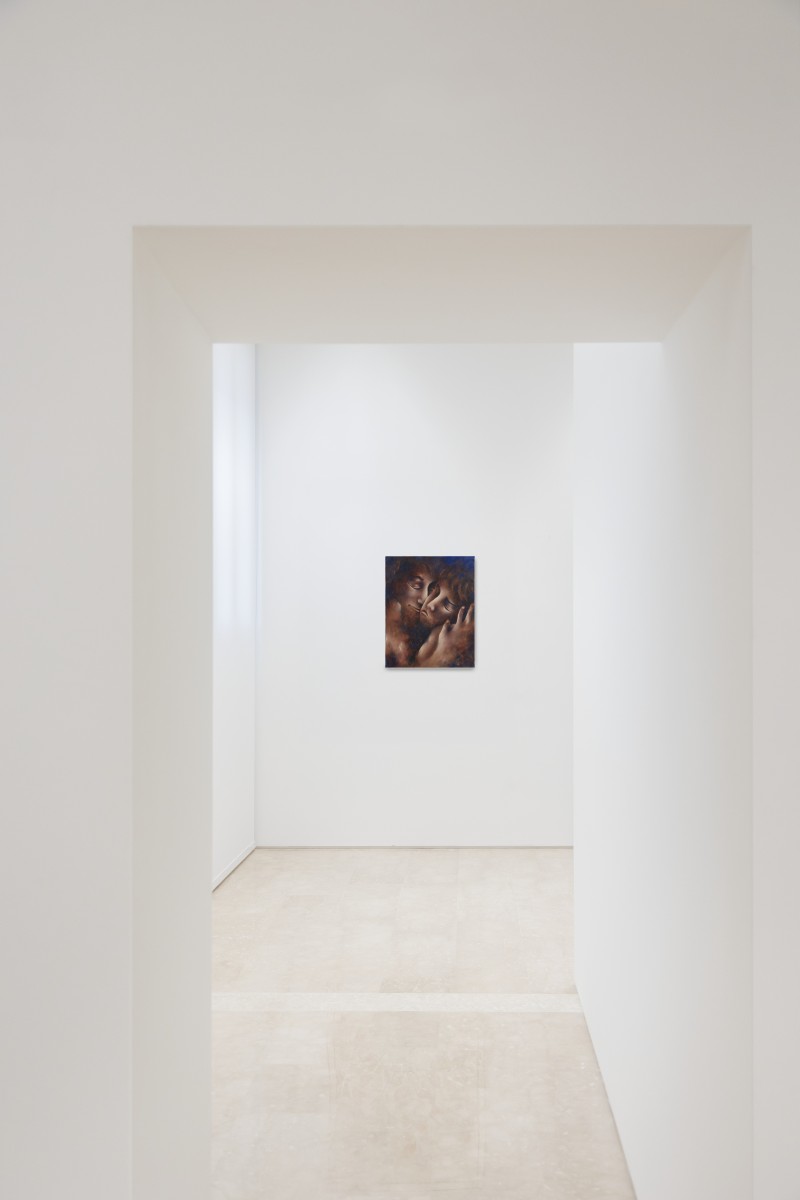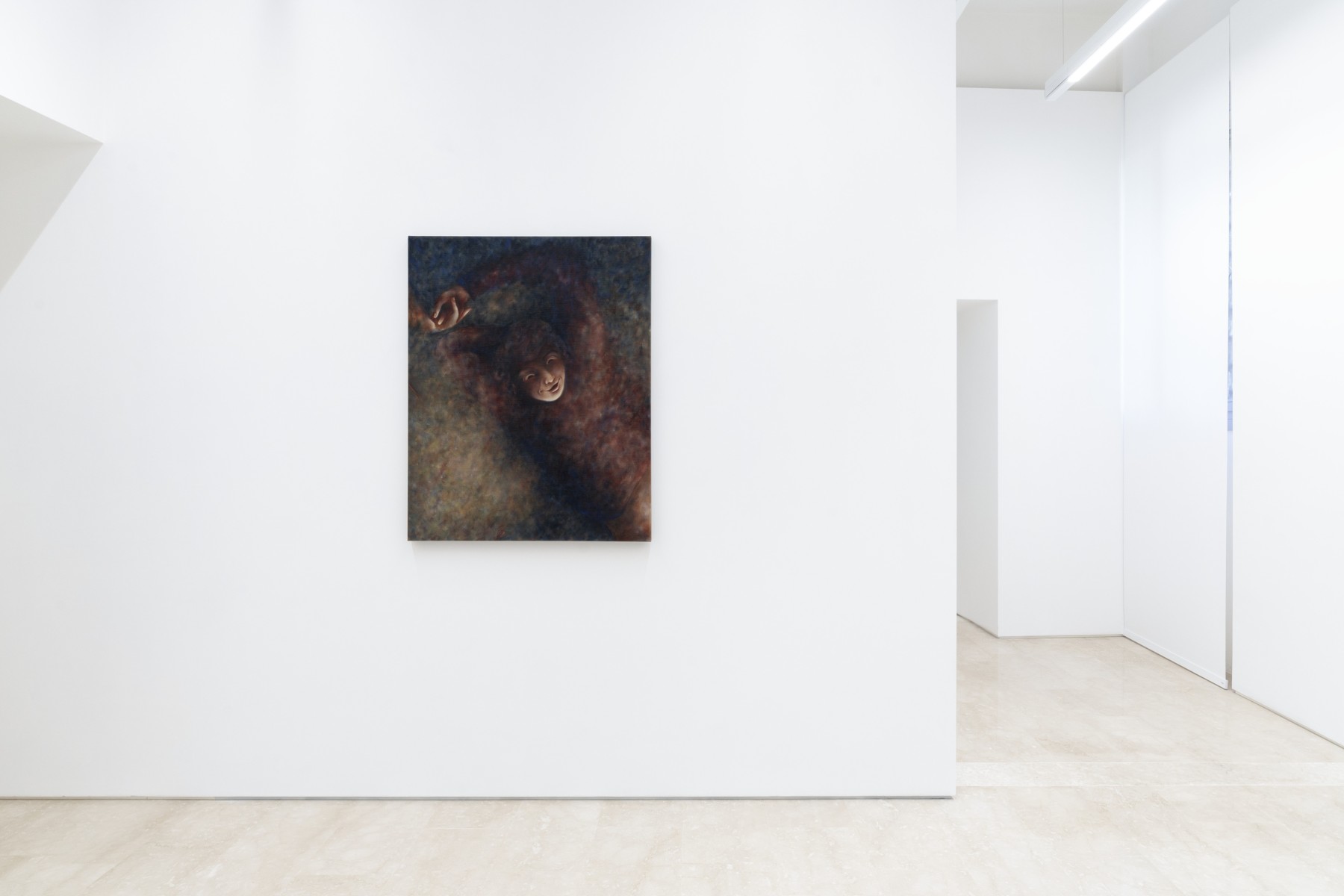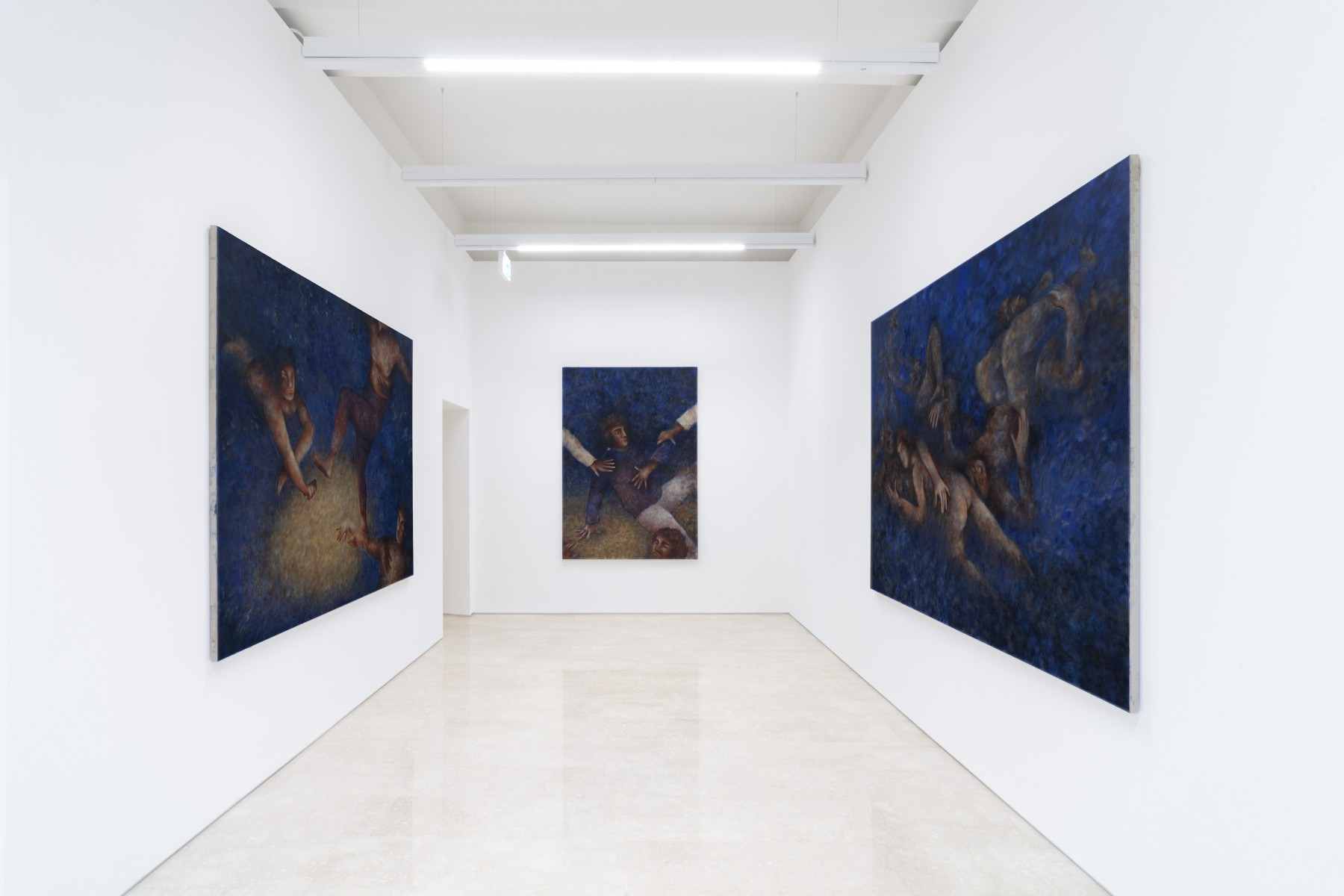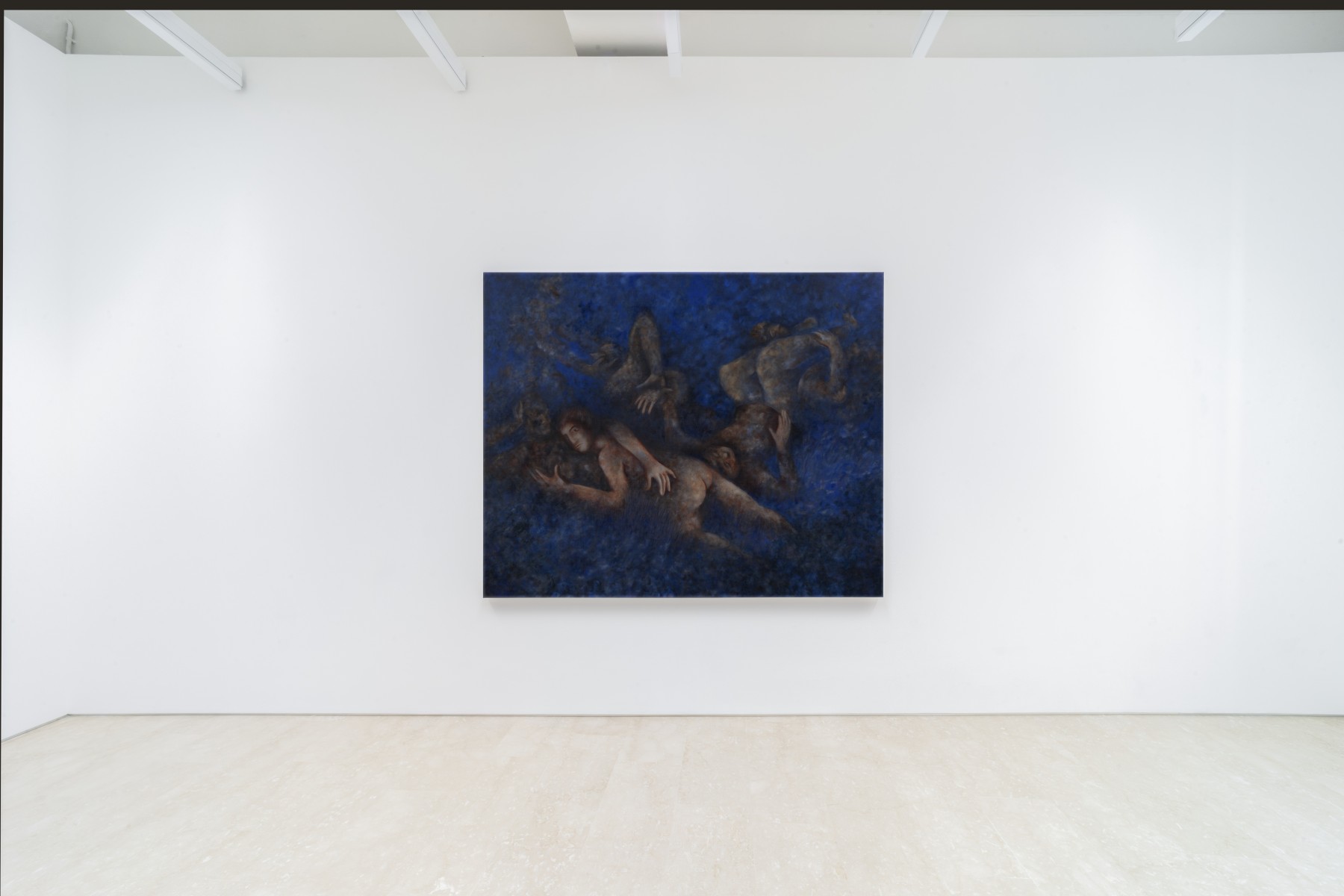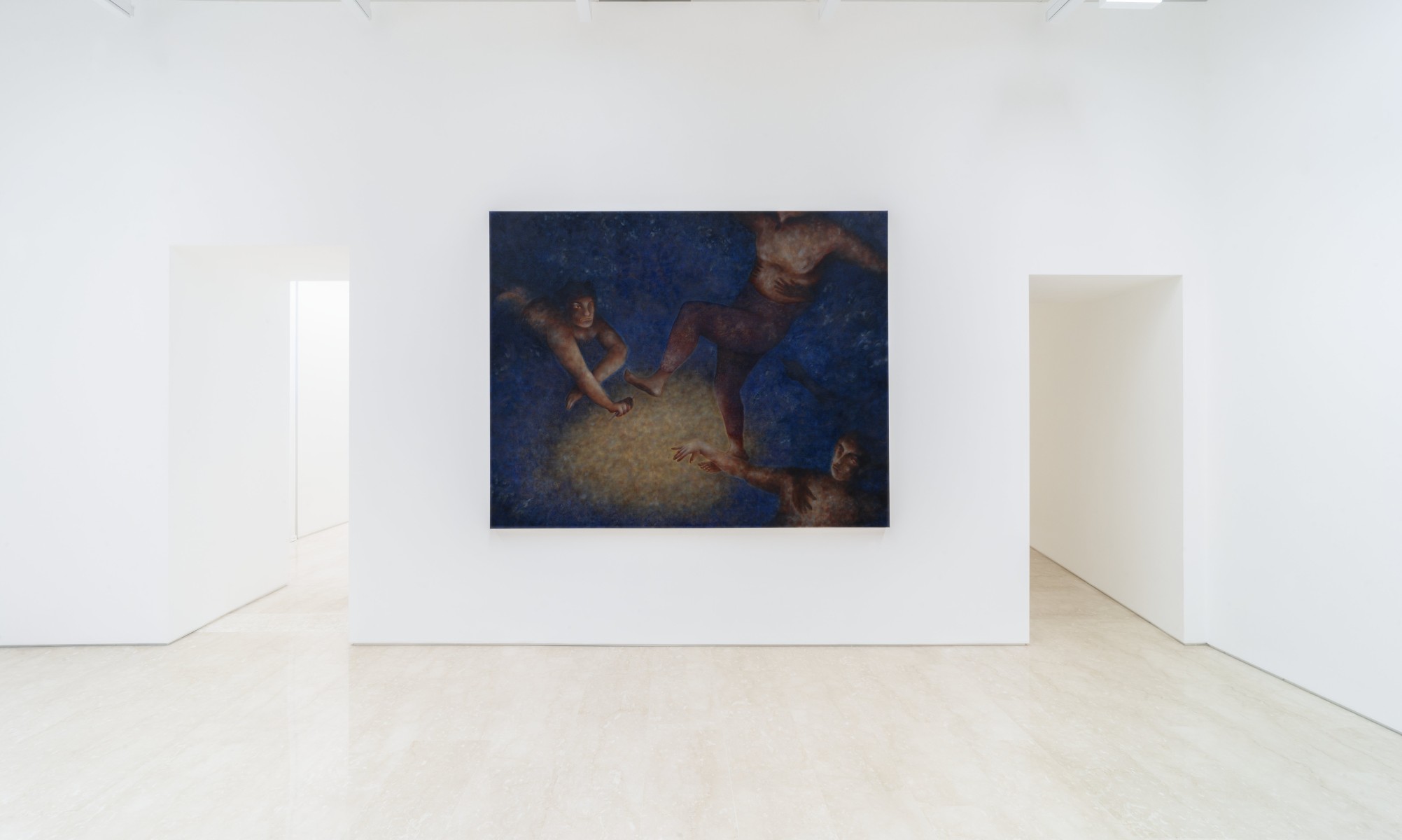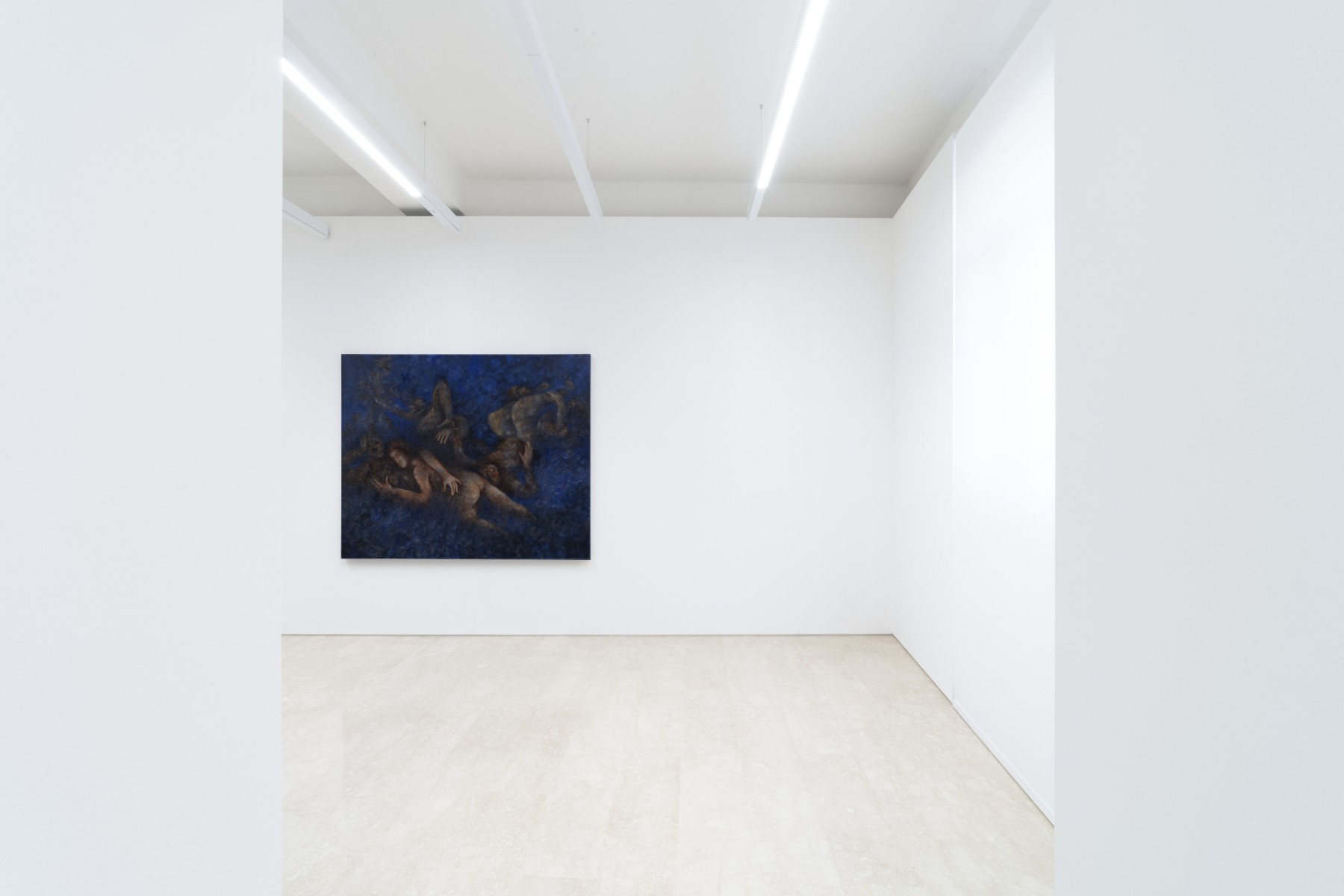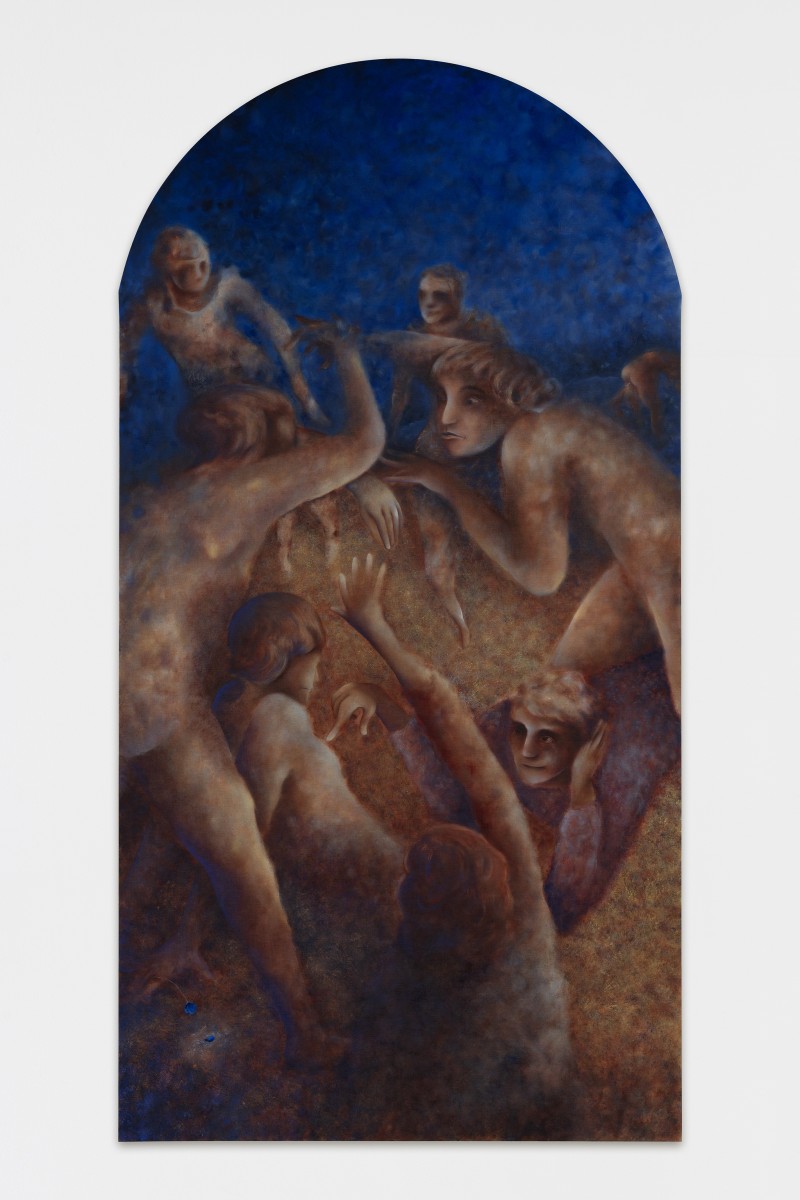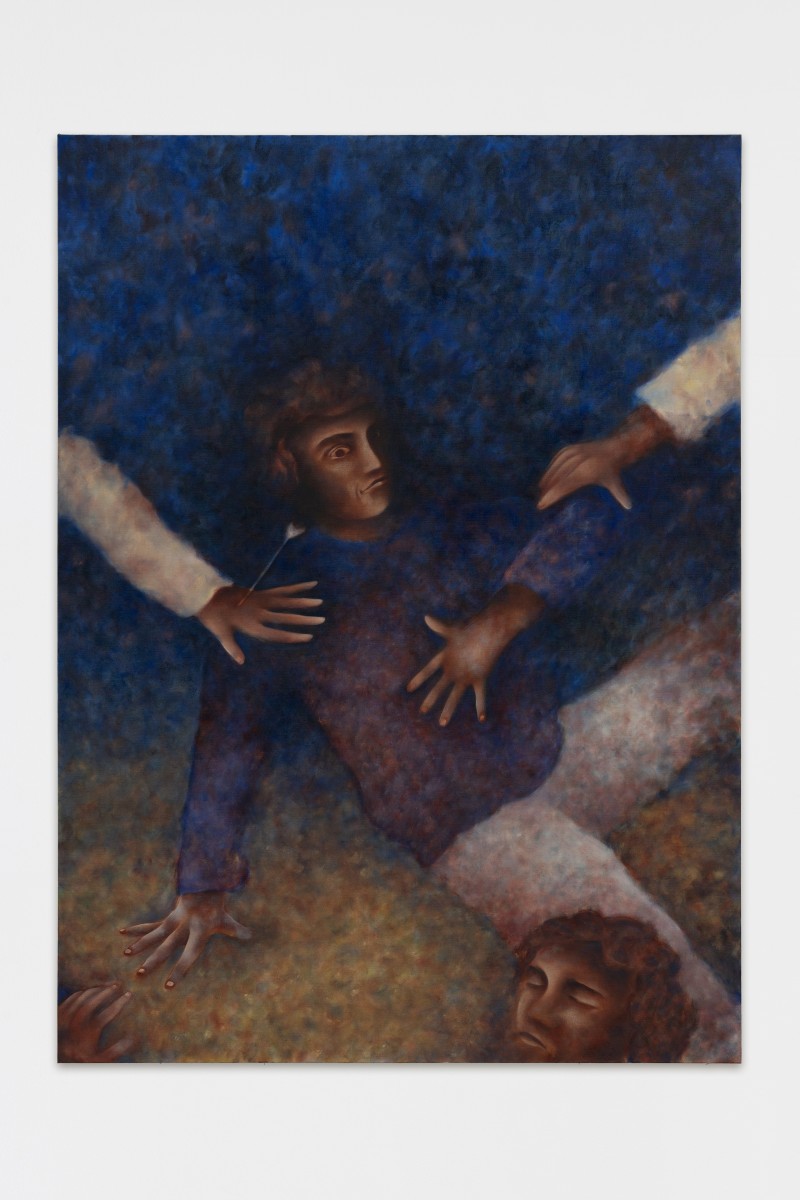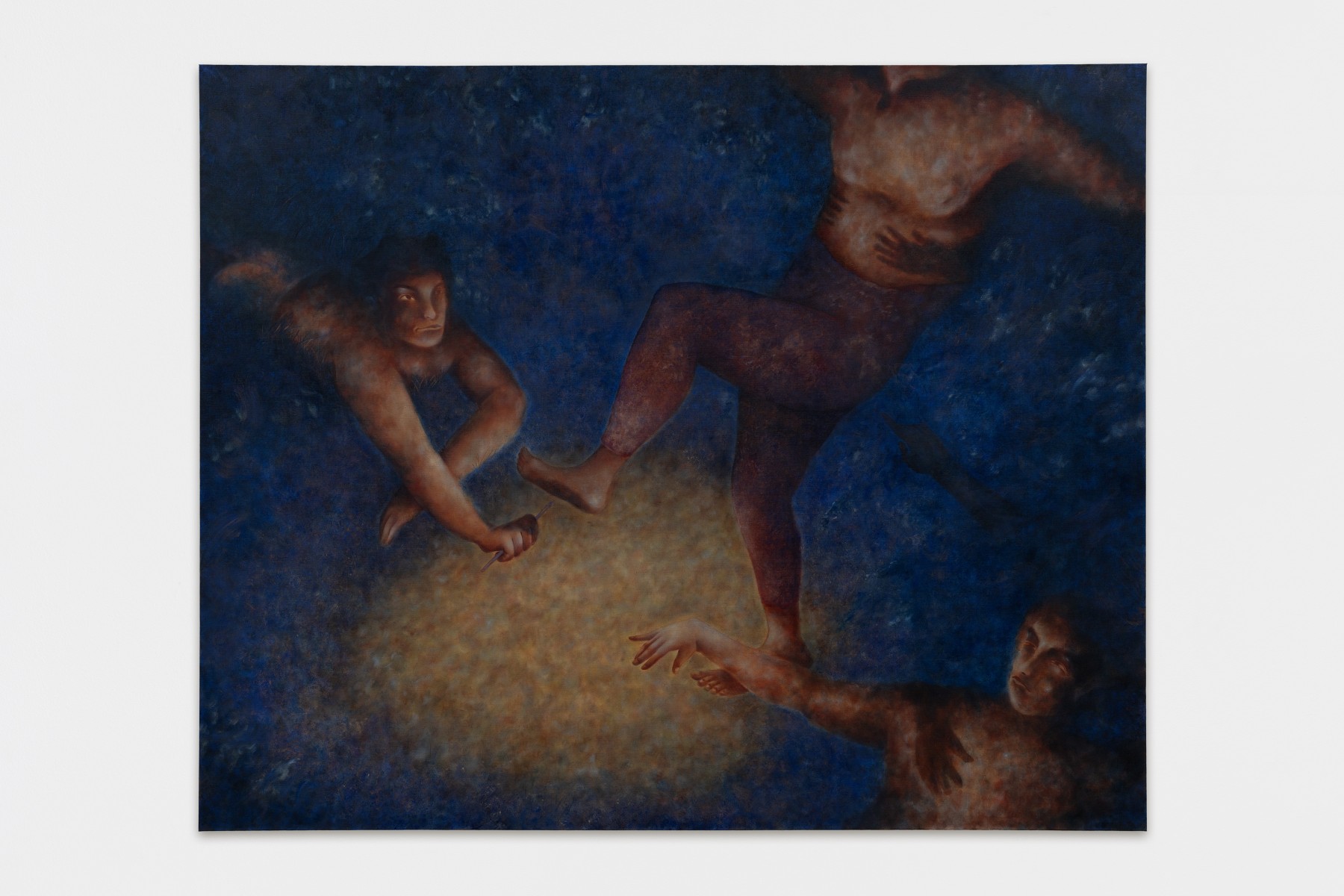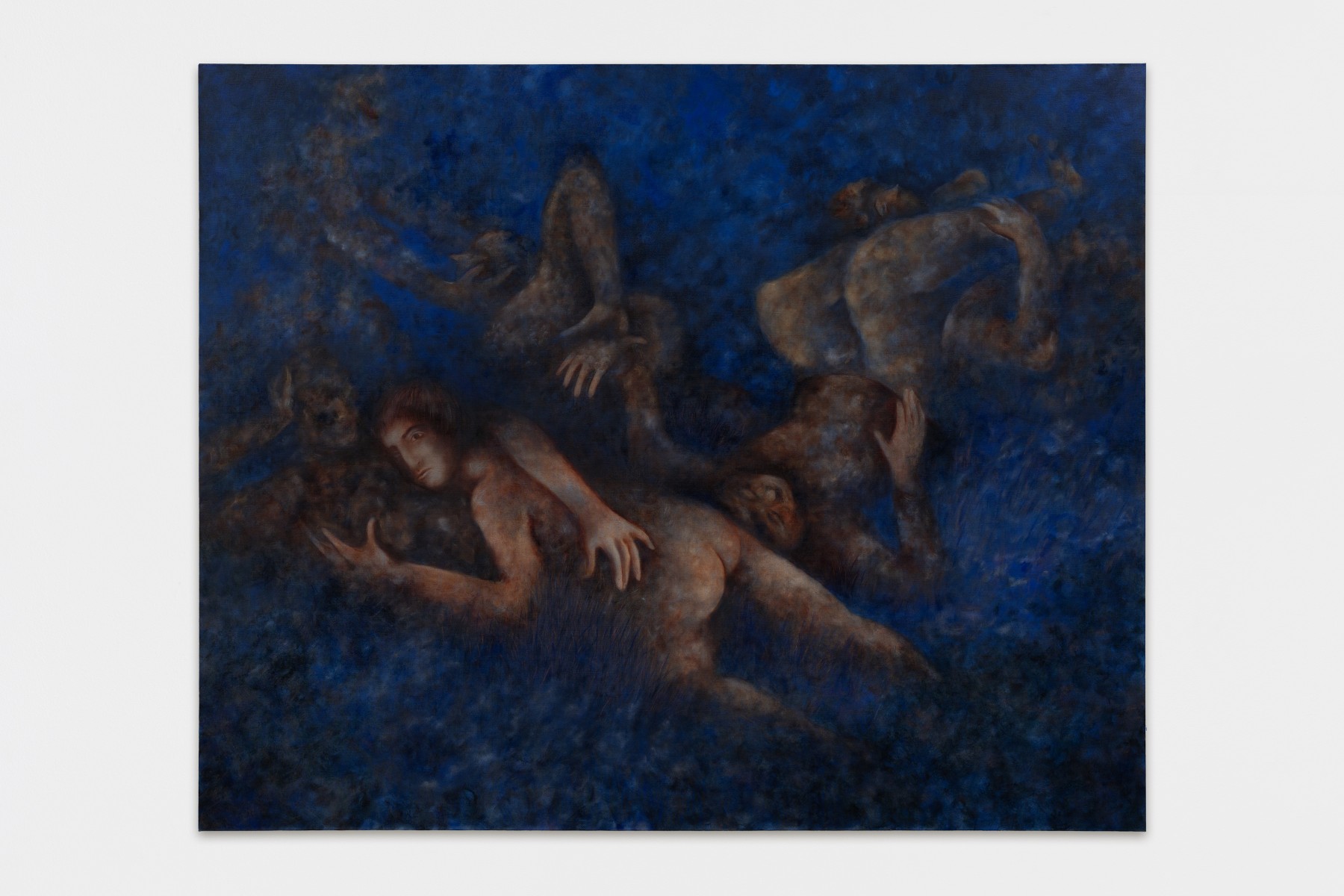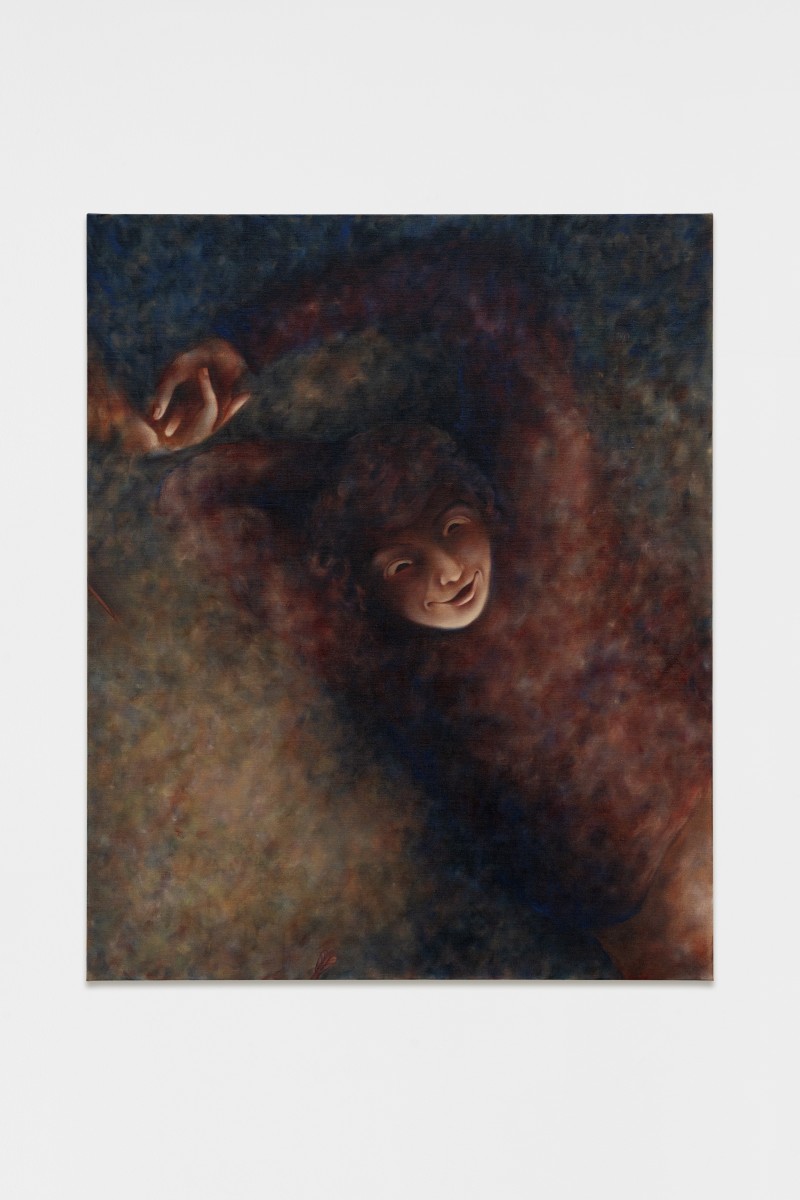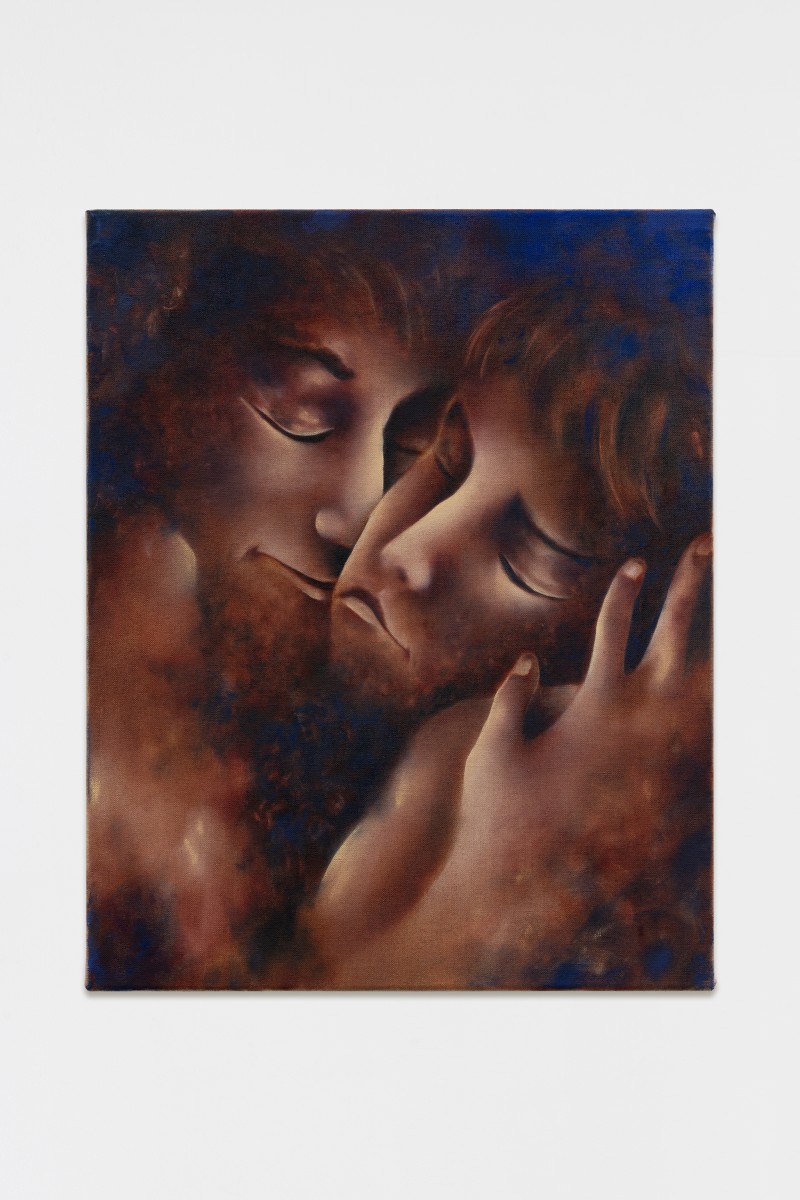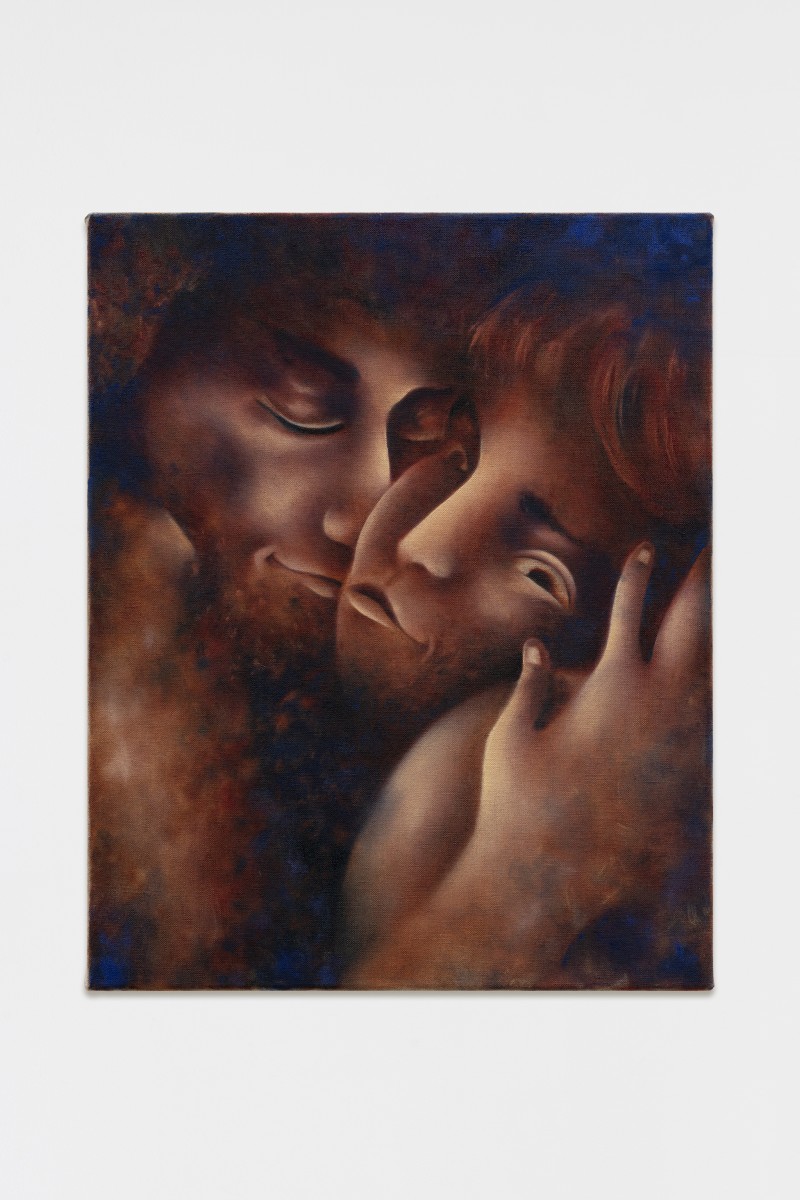Cecilia De Nisco - Stavo cercando il tuo cuore lí dentro ma ho trovato solo latte (I Was Looking for Your Heart Inside There, but I Found Only Milk)
Location: Fondazione Sandra e Giancarlo Bonollo per l'Arte Contemporanea, Via dell’Eva 1, Thiene 36016 (Vicenza), Italy
Opening hours: Thursday 14:00 - 19:00, Friday and Saturday 10:30 - 12:30 / 14:00- 19:00
Reviewed on: Exibart - Il corpo secondo Chiara Enzo e Cecilia De Nisco, by Zaira Carrer
The title of Cecilia De Nisco’s solo exhibition, curated by Marta Papini, is Stavo cercando il tuo cuore lì dentro ma ho trovato solo latte (“I Was Looking for Your Heart Inside There, but I Found Only Milk”), designed specifically for the spaces of the former Church of the Dimesse. For this exhibition, the artist has created seven new paintings, offering insight into her artistic research path. The subjects of De Nisco’s works are bodies in motion, frozen in a suspended moment where their intentions remain ambiguous, eternally suspended between desire and violence.
Cecilia De Nisco depicts people “doing absolutely nothing”, as she explains. The artist paints bodies in motion, but freezes them in a suspended moment, in which the subjects' intentions remain ambiguous, balanced between desire and violence. De Nisco escapes every category, every definition, every perimeter of meaning.
“The canvas seems to me a space in which to do what you don't allow yourself to do in reality. And even when you do them on canvas you are not completely sincere. You don't really do what you want”. It is a battle between desire, will and denial that surfaces in every painting: the artist paints and then hides, focuses attention and light on one point only to divert it from the other.
For her solo exhibition at the Fondazione Bonollo, Cecilia De Nisco has produced seven new works. The conversation between us took place at different times, in video calls from Bologna to Vienna in which behind the artist's back I could give a look to the painting she was working on for the exhibition in greater detail every day, as if the figures were emerging on the surface of the canvas.
1. In the Chiesa della Dimesse, the space of the old altarpiece will be temporarily occupied by your personal interpretation of an altarpiece, designed specifically for that niche. How did you approach this format? Did the fact that it was intended for a former sacred space change your way of thinking about composition and final form?
It would be a lie not to admit that when entering a space as strongly characterised as the church - empty and bare - the first thought runs to return its altarpiece. A symbol that is meant to emphasise, with a touch of irony and a slight provocation, these formulas of devotion.
Kyrie, Kyrie eleison!
2. From the church, you can catch a glimpse of the work facing the neighbouring space. If I don’t go wrong, this is the first work you created for this exhibition. Can you tell me why you started from here, and how this work differs from (or is connected to) the previous ones?
It is a succession of experiences, I get distracted trying to understand what is happening beyond the canvas.
3. In the history of art, many artists have portrayed themselves within their artworks, and I couldn't help but wonder if some of the subjects you portray resemble you somehow. Do you see yourself in them?
Hmm... we should be thinking very actively about how not to do it!
4. The pair of paintings is entitled Piccole catastrofi per minuti intimi. The subjects are almost the same, depicted in the same intimate embrace, were it not for one detail: in one of the two, the eyes of the figure in the foreground are open and looking at the viewer. This small difference makes that intimacy ambiguous, the embrace that first seemed tender becomes forced, seeming to witness an abuse, a contact without consent. What fascinates you about the ambiguity of these subjects?
piccole catastrofi
per minuti intimi
all this means
digging deep
5. The third and last room displays three large-format works. In these works some bodies are fully dressed, others naked, some are shot by arrows, others show the trace of other people's hands on their skin, as if a shadow had left an everlasting mark of its own passage. The hands seem to be to be the real subject: they touch, squeeze, caress, hit and tickle, while the bodies suffer their attentions. Why do you think the hands are so central (if you think so!) in your work?
I don't think we should talk about centrality, but rather about necessity - as in this case - without the intention of finding a definitive solution. As you suggest, the hands touch, caress and hit, as happens in reality. Perhaps they are a means of communicating silently, or of completely disrupting the scene. Hands manifest intentions, it is up to us to decide whether or not to go along with them. If the room is dark, the first instinct is to let the hands guide us.
- Marta Papini, 2024
Reviewed on:
. Exibart - Il corpo secondo Chiara Enzo e Cecilia De Nisco, by Zaira Carrer
|
|
